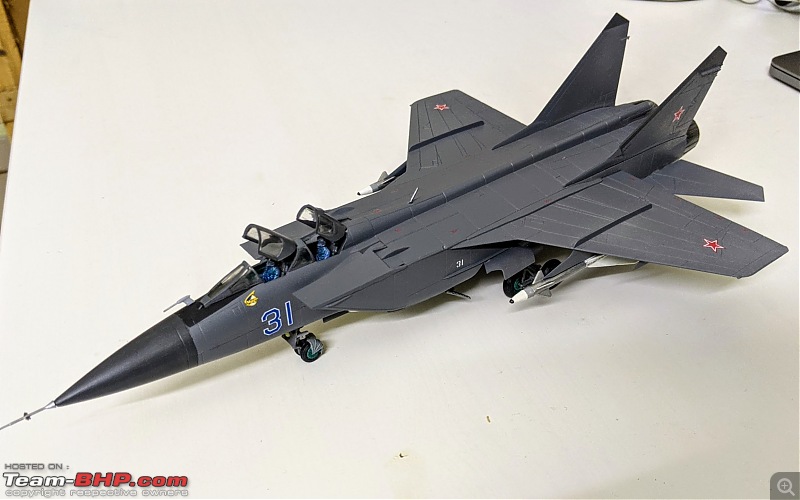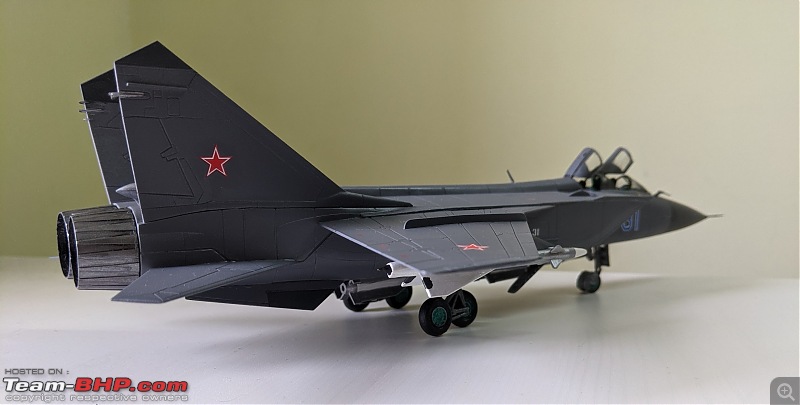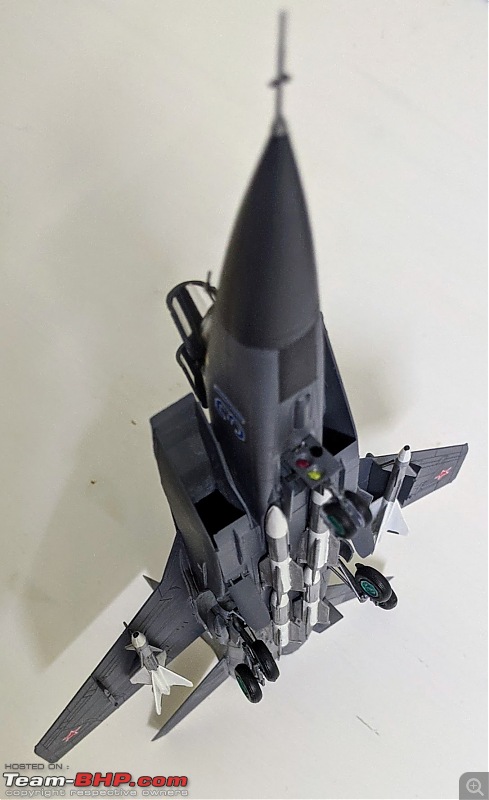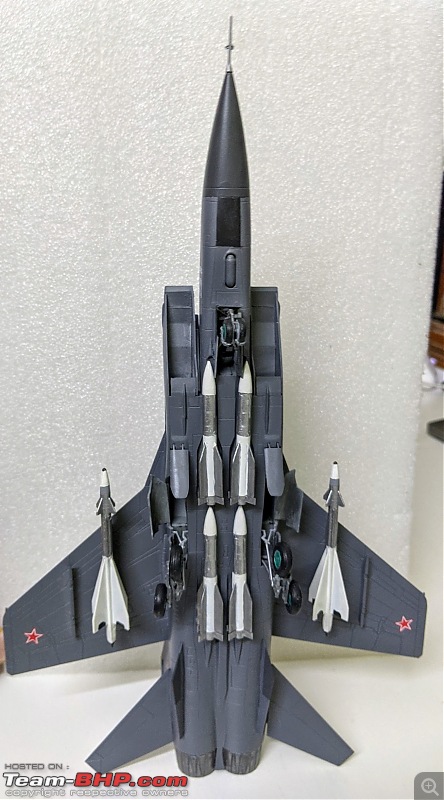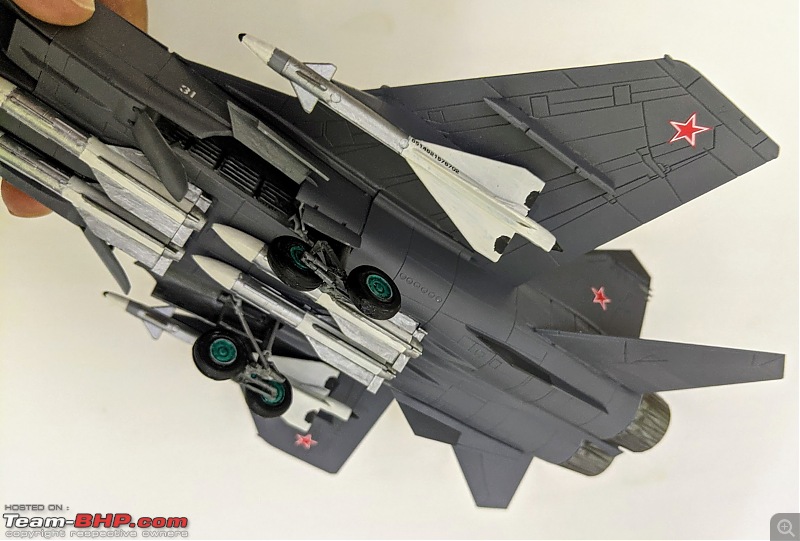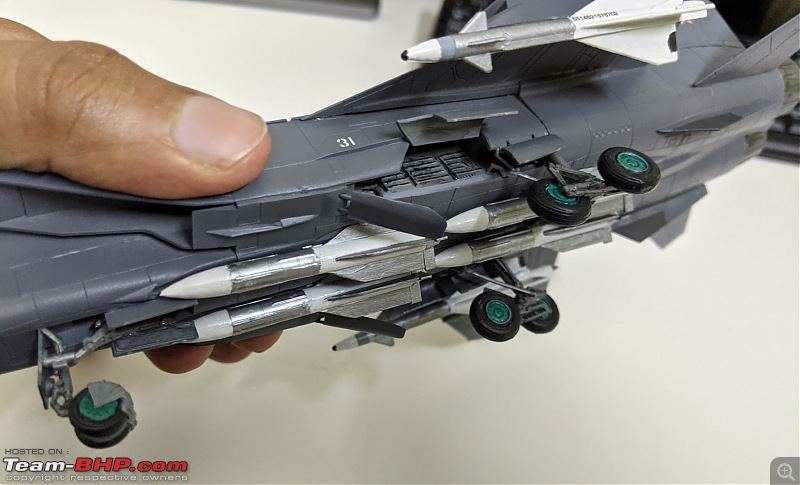1:72 Northrop F-5E Tiger II Patrouille Suisse 55th Anniversary, 2019 (Hobbymaster)
The F-5E Tiger II, a single-seat twin-engined supersonic fighter aircraft, was developed by Northrop Grumman, USA. The aircraft took its maiden flight on 11 August 1972 and entered into service in 1975. It is the upgraded version of the F-5A Freedom fighter aircraft developed by Northrop Grumman in early 1959.
The production of F-5A-21 began in 1970 by Northrop Grumman and at the same time the aircraft was renamed ‘F-5E Tiger II’. The avionics of the F-5E Tiger II are more sophisticated compared to the earlier version F-5A aircraft. It rolled out from production in 1987 and since then has undergone various upgrades to compete with changing combat environments.
The F-5E is powered by two General Electric J85-GE-21B turbojet engines.
A reconnaissance version, the RF-5E Tigereye, with a sensor package in the nose displacing the radar and one cannon, was also offered.
792 F-5Es, 146 F-5Fs and 12 RF-5Es were eventually built by Northrop. More were built under license overseas: Hundreds more were built under license in Switzerland,South Korea and Taiwan.
The F-5E proved to be a successful combat aircraft in service with U.S. allies, but had no combat service with the U.S. Air Force, though the F-5A with modifications, designated F-5C, was flown by the U.S. in Vietnam. The F-5E evolved into the single-engine F-5G, which was rebranded the F-20 Tigershark. It lost out on export sales to the F-16 in the 1980s.
Iranian AIr Force was probably the only air arm with whom teh F-5 saw major combat. IRIAF F-5s were heavily involved in combat against Iraq during teh Iran-Iraq War of the 80s, flying air-to-air and air-to-ground sorties. Iranian F-5s took part in air combat with Iraqi MiGs, Su-20/22, Mirage F-1 and Super Etendards. The exact combat record is not known with many differing claims from Iraqi, Iranian, Western, and Russian sources. There are reports that an IRIAF F-5E, piloted by Major Yadollah Javadpour, shot down a MiG-25 on 6 August 1983.Russian sources state that the first confirmed kill of a MiG-25 occurred in 1985.
During the first years of service, Iranian F-5 fighter aircraft had the advantage in missile technology, using advanced versions of the IR seeking Sidewinder, later lost with deliveries of new missiles and fighters to Iraq.
Iran Aircraft Manufacturing Industrial Company currently produces three aircraft, the Azarakhsh, Saeqeh, and Kowsar, derived from the F-5.
Swiss AIr Force/Patrouille Suisse
The Swiss Air Force flies a total of 22 F-5E and four F-5F aircraft, down from a peak of 98 and 12 in 1981. They were chosen chiefly because of their excellent performance, suitability for the unique Swiss Air Force mission, and their relatively low maintenance cost per flight hour.
It had been expected these aircraft would be replaced by the Saab JAS 39 Gripen, but in May 2014, a referendum the Swiss people decided against the purchase of the Gripens.
For the foreseeable future, the Swiss Air Force will continue to fly its present F-5s. There are still plans by the Swiss Air Force and in the Swiss parliament to fly 18 F-5E and four F-5F models. This would also include the continued operation of the Patrouille Suisse, in F-5Es until 2018.
The Patrouille Suisse is an aerobatic team of the Swiss Air Force. The team flies six Northrop F-5E Tiger II fighter/bomber jets.
Specifications Northrop F-5E Tiger II
Crew: 1
Dimensions
Length - 47 ft 4.75 in (14.45 m)
Wingspan - 26 ft 8 in (8.13 m)
Height - 13 ft 4.5 in (4.08 m)
Powerplant
2 X General Electric J85-GE-21B turbojet
Dry thrust - 3,500 lbf (15.5 kN) per engine
Thrust with afterburner - 5,000 lbf (22.2 kN) per engine
Internal fuel - 677 US gal (2,563 L)
External fuel - 275 US gal (1,040 L) per tank in up to 3 tanks
Weight
Empty weight - 9,558 lb (4,349 kg)
Loaded weight - 15,745 lb (7,157 kg)
Max takeoff weight - 20,486 lb (9,312 kg)
Performance
Maximum speed - 917 kn (1,060 mph, 1,700 km/h, Mach 1.6)
Range - 760 nmi (870 mi, 1,405 km)
Ferry range - 2,010 nmi (2,310 mi, 3,700 km)
Service ceiling - 51,800 ft (15,800 m)
Rate of climb - 34,400 ft/min (175 m/s)
Armament
Guns – 2 X 20 mm (0.787 in) Pontiac M39A2 Revolver cannons in the nose, 280
rounds/gun
Hardpoints - 7 total (3 X wet): 2 X wing-tip AAM launch rails, 4 X under-wing and 1 X under-
fuselage pylon stations holding up to 7,000 pounds (3,200 kg) of payload.
Rockets
2 X LAU-61/LAU-68 rocket pods (each with 19 X / 7 X Hydra 70 mm rockets, respectively)
or
2 X LAU-5003 rocket pods (each with 19 X CRV7 70 mm rockets)
or
2 X LAU-10 rocket pods (each with 4 X Zuni 127 mm rockets)
or
2 X Matra rocket pods (each with 18 X SNEB 68 mm rockets)
Missiles:
Air-to-air missile:
4 X AIM-9 Sidewinders
Air-to-surface missile:
2 X AGM-65 Mavericks
Bombs: A variety of air-to-ground ordnance such as the Mark 80 series of unguided iron
bombs (including 3 kg and 14 kg practice bombs), CBU-24/49/52/58 cluster bomb
munitions, napalm bomb canisters and M129 Leaflet bomb and laser guided bombs of
Paveway family.
Others: up to 3 X 150/275 US gallon Sargent Fletcher drop tanks for ferry flight or extended
range/loitering time.
Avionics
Emerson Electric AN/APQ-153 radar on early batch of F-5E
Emerson Electric AN/APQ-159 radar on later production F-5E
Although I managed to ruin a couple of decals during application, I can't thank Foxbat enough for his advice on applying these water slide decals ( for the pilot names & aircraft serial numbers). I took some advice from a guy on the Hobbymaster FB page as well. It is relatively an easy job which I thought was tough. It requires a little bit of patience and steady hands - qualities which I lack

.
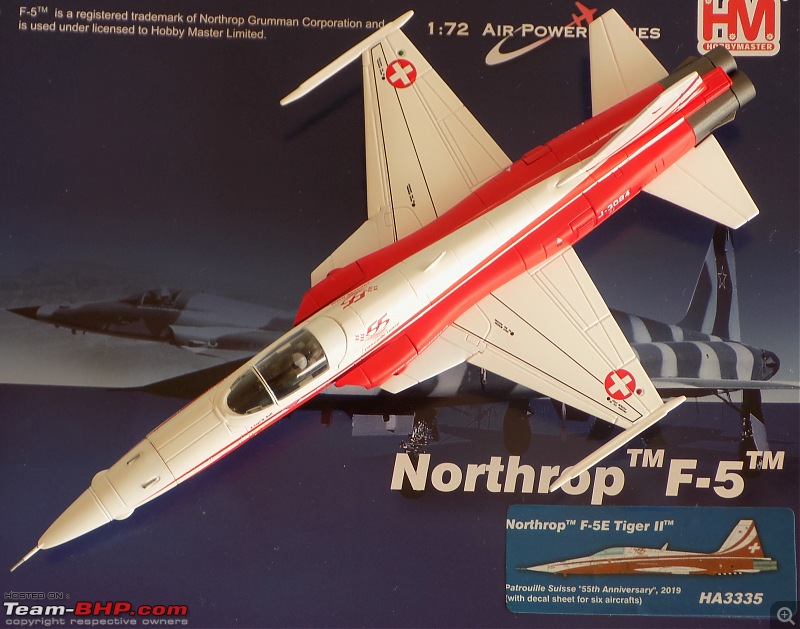
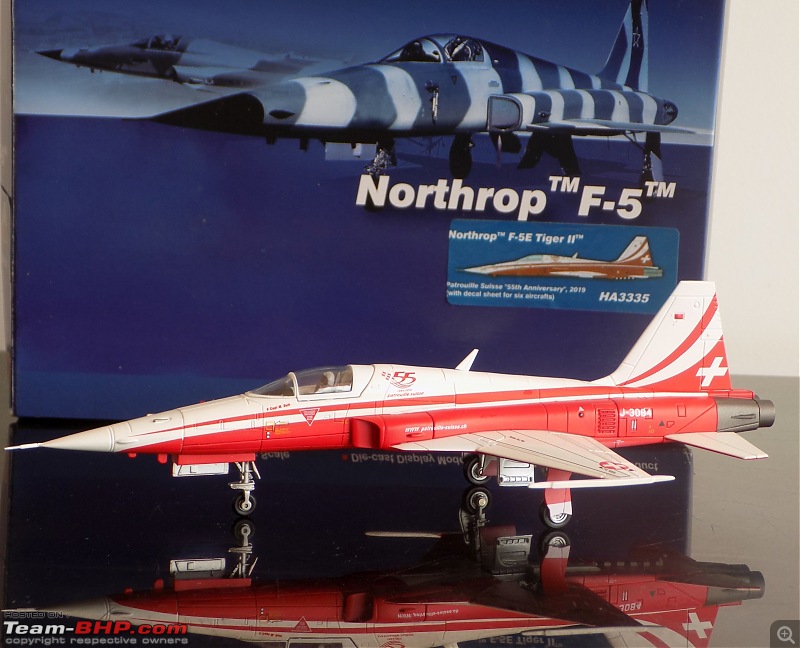
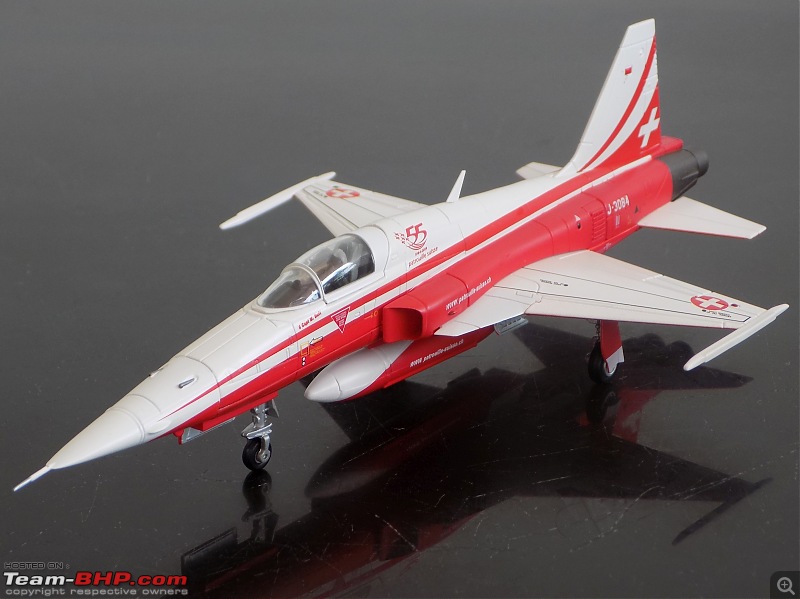
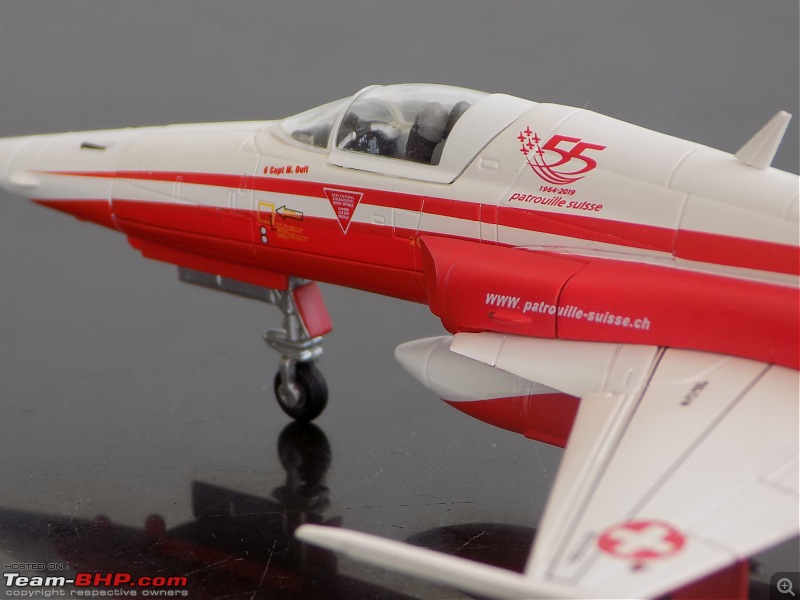
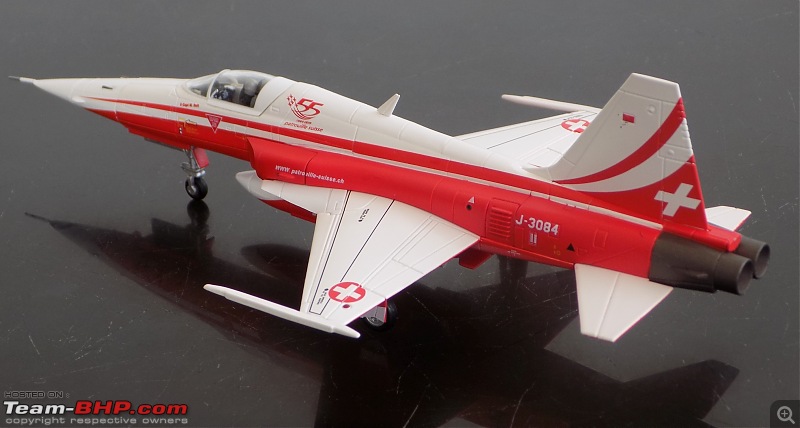
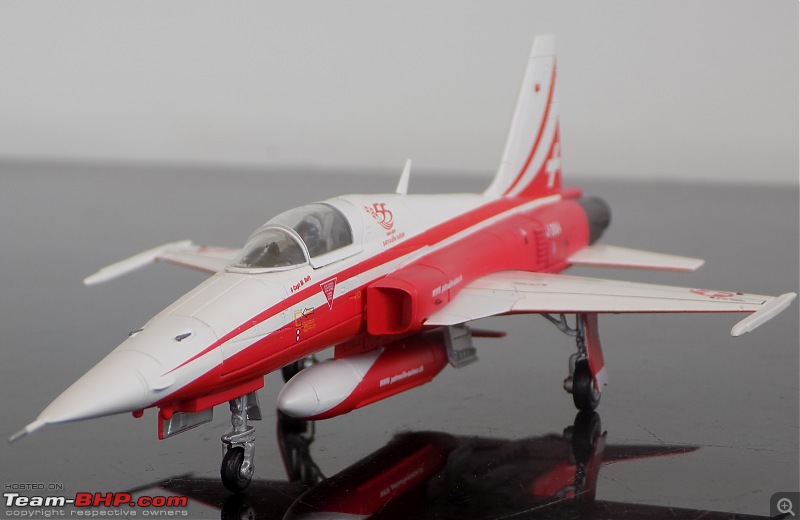
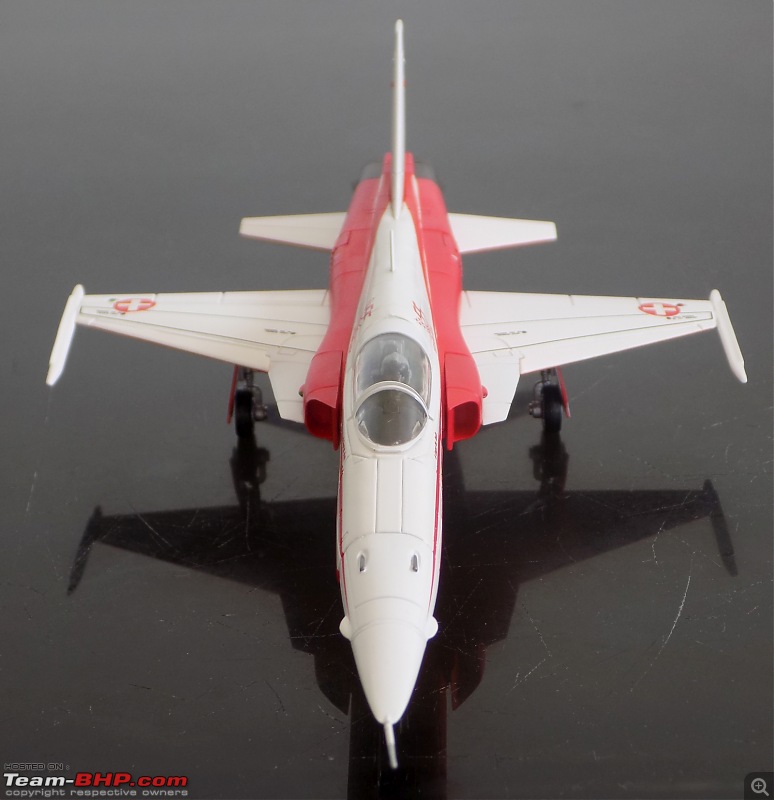
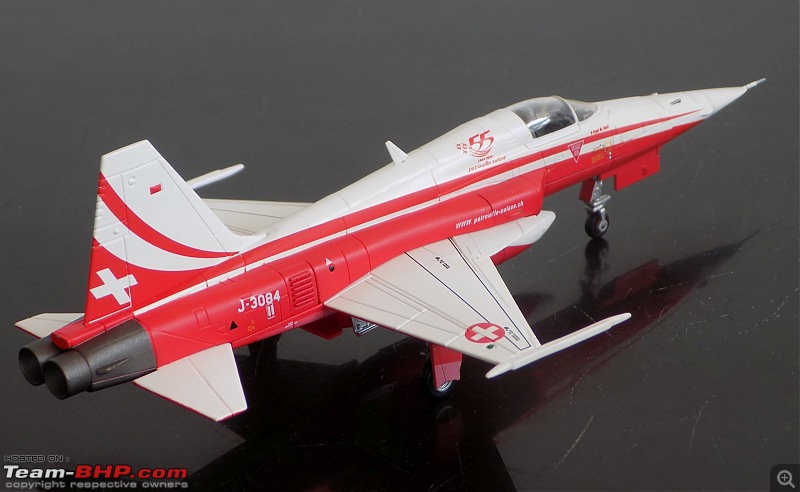
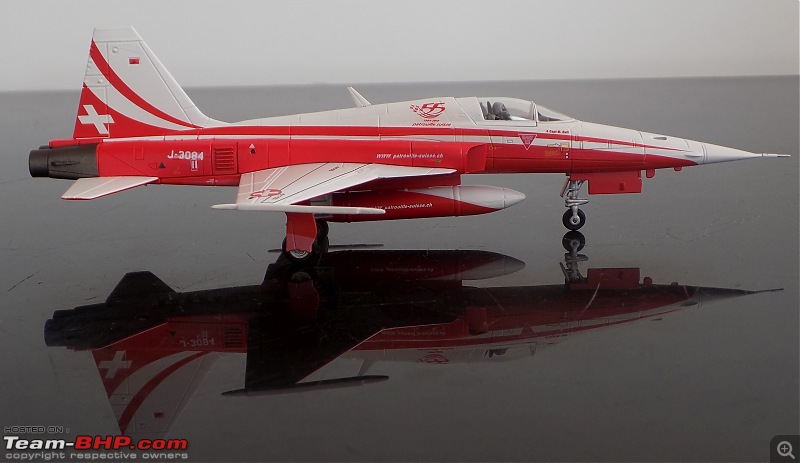
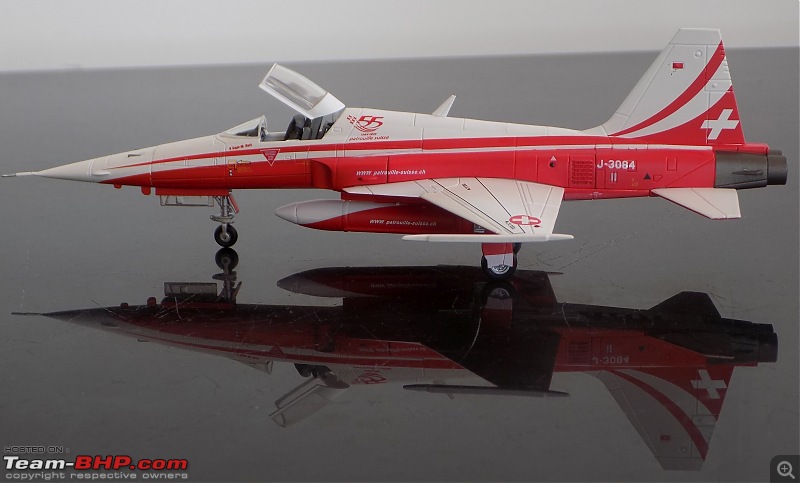
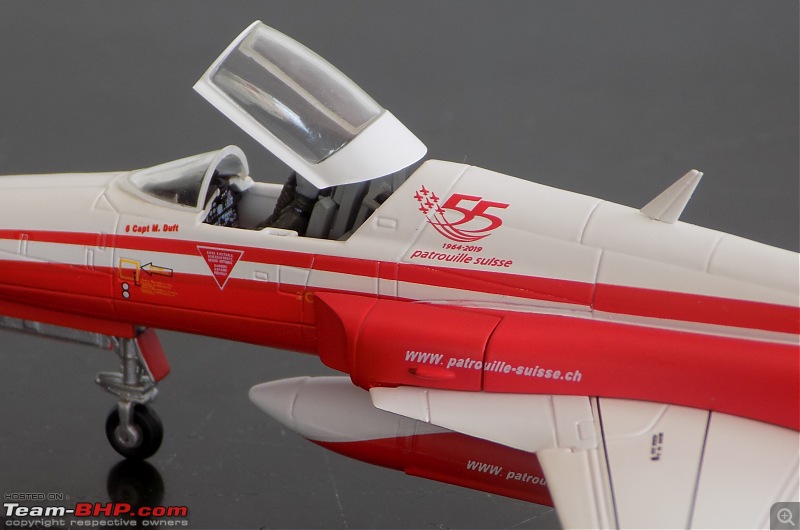
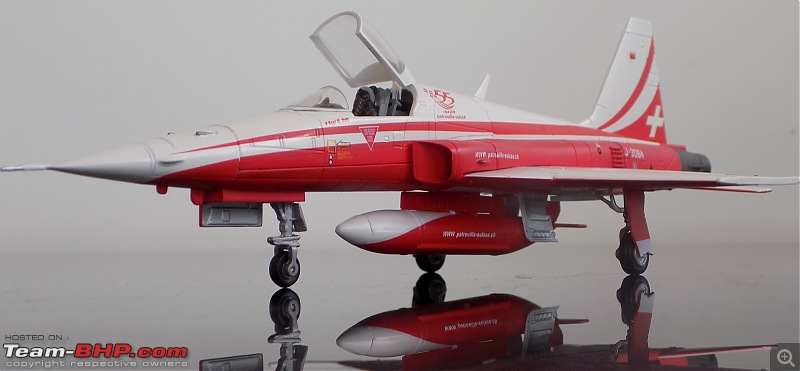
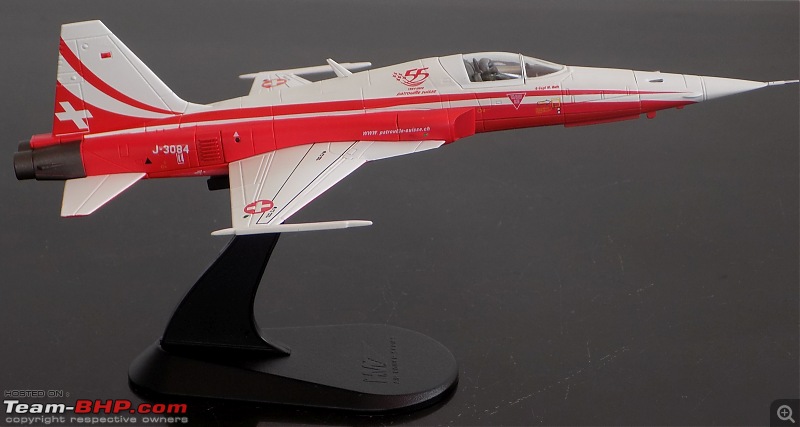
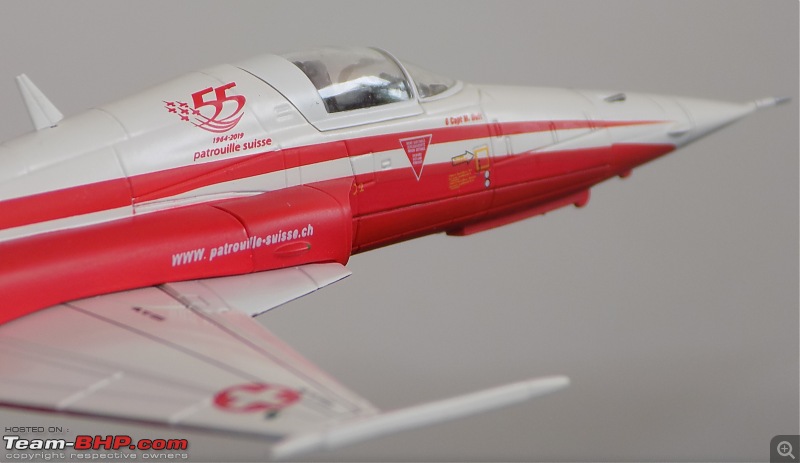
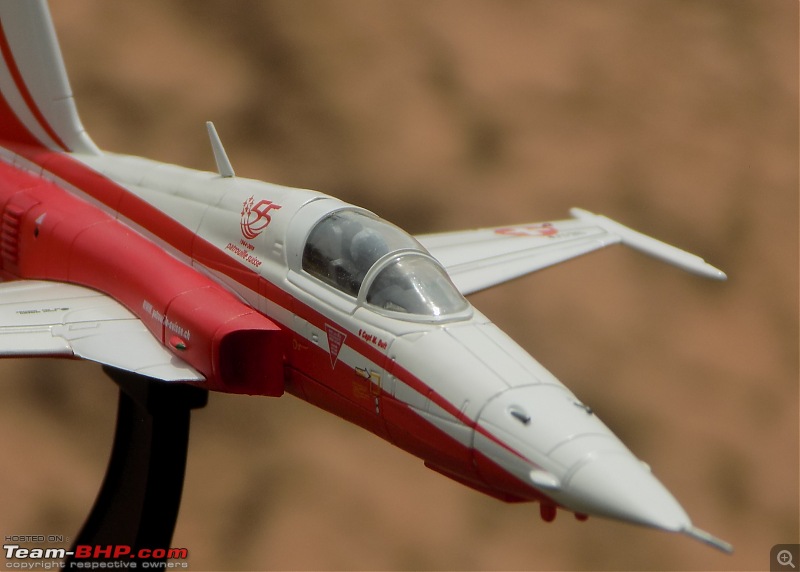


Reminds of you another aircraft from our immediate neighbourhood, doesn't it?
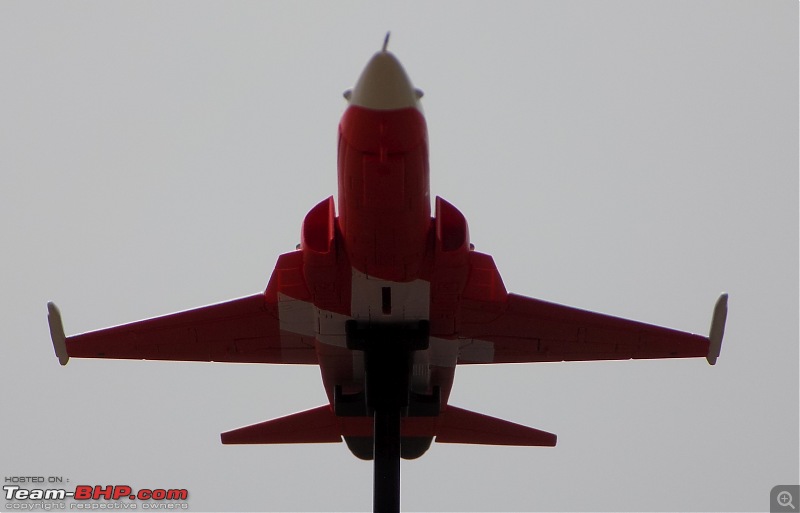
The location of pilot names in pictures vary from aircraft to aircraft some are right under the canopy, while in some they are under the windshield frame.
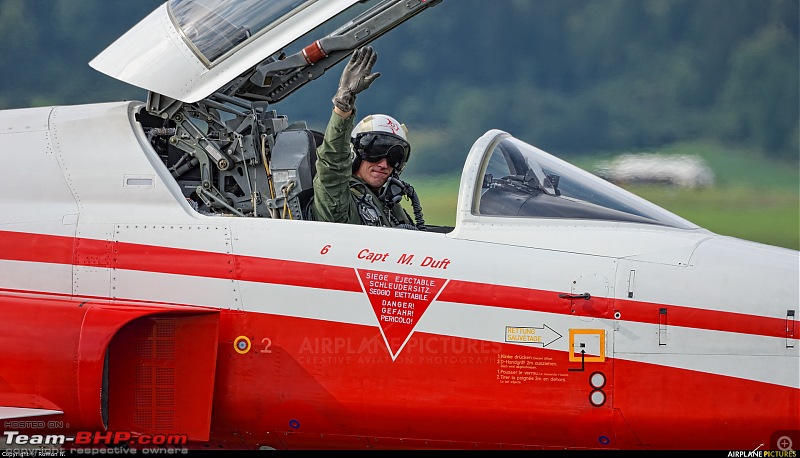
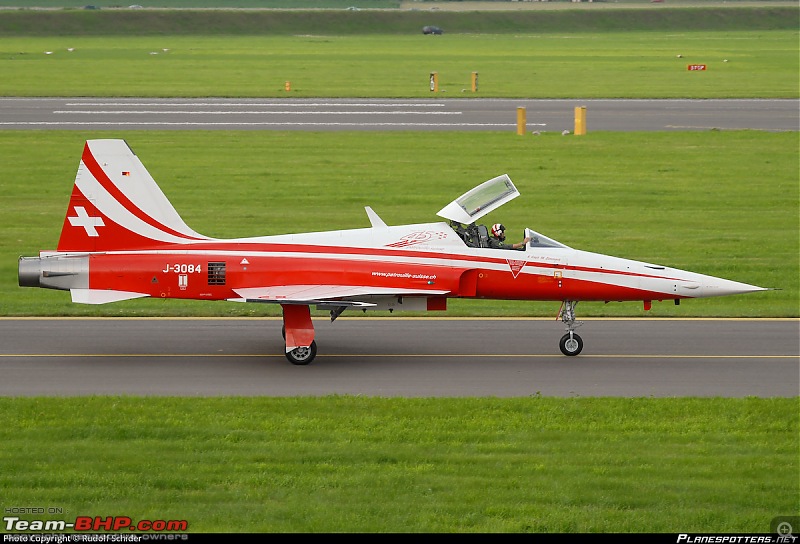
 (1)
Thanks
(1)
Thanks

 (1)
Thanks
(1)
Thanks
 (3)
Thanks
(3)
Thanks

 (1)
Thanks
(1)
Thanks
 (6)
Thanks
(6)
Thanks
 (1)
Thanks
(1)
Thanks
 (8)
Thanks
(8)
Thanks

 (2)
Thanks
(2)
Thanks
 (1)
Thanks
(1)
Thanks
 (7)
Thanks
(7)
Thanks





 !!!!Thank you for your valuable suggestions Foxbat. Much Appreciated
!!!!Thank you for your valuable suggestions Foxbat. Much Appreciated .
. 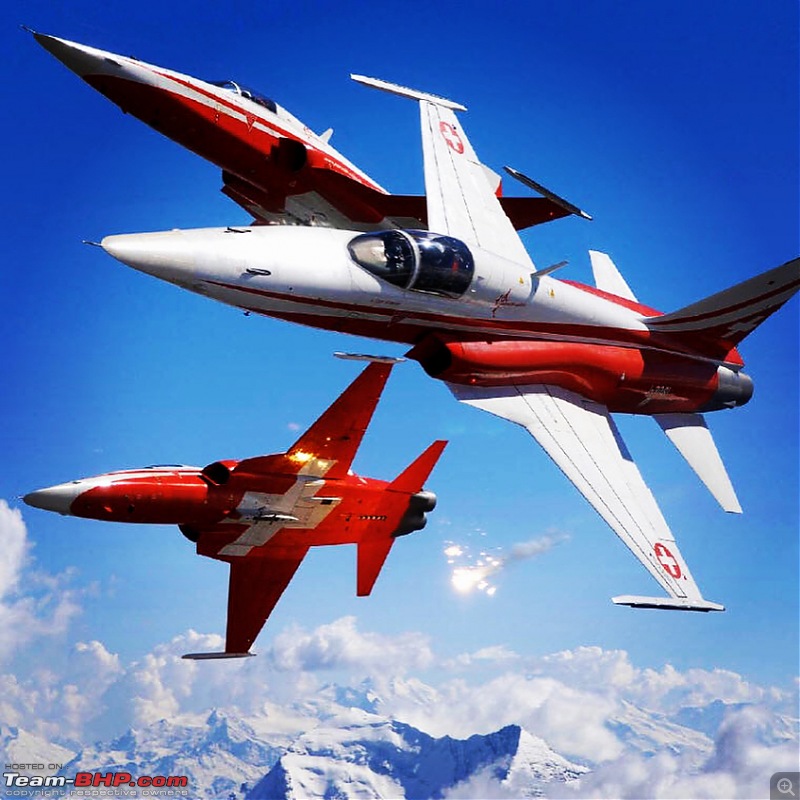
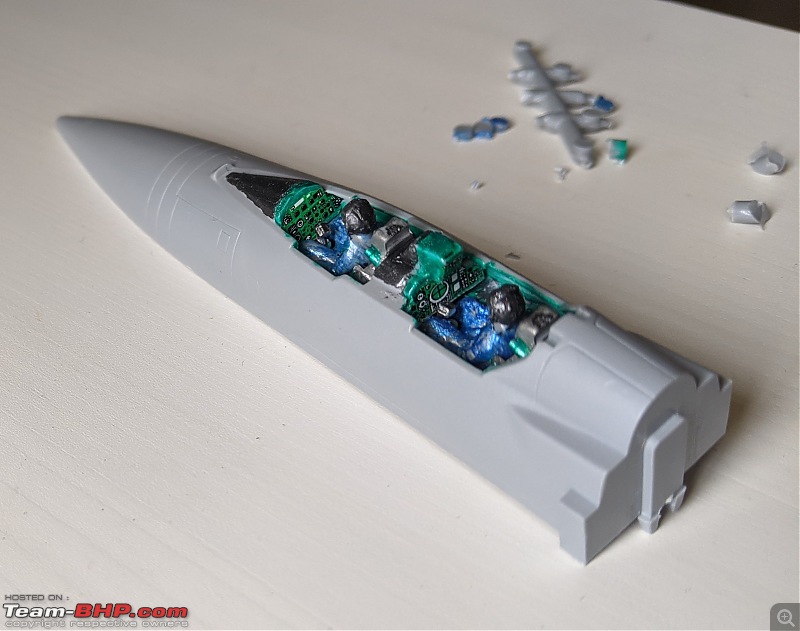
 Made, sold and shipped from mother Russia. As authentic as it gets with instructions in Russian and approval from the Russian Aircraft Corporation "MIG".
Made, sold and shipped from mother Russia. As authentic as it gets with instructions in Russian and approval from the Russian Aircraft Corporation "MIG".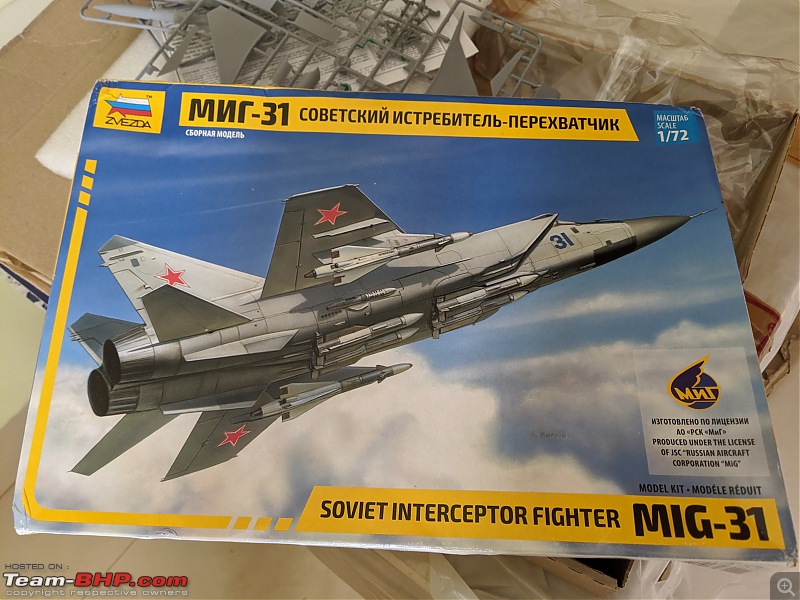
 .
.



















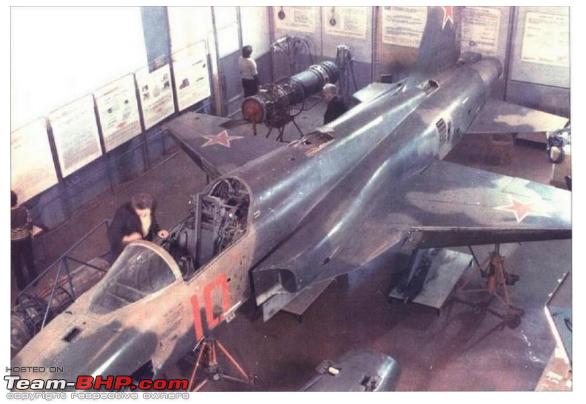
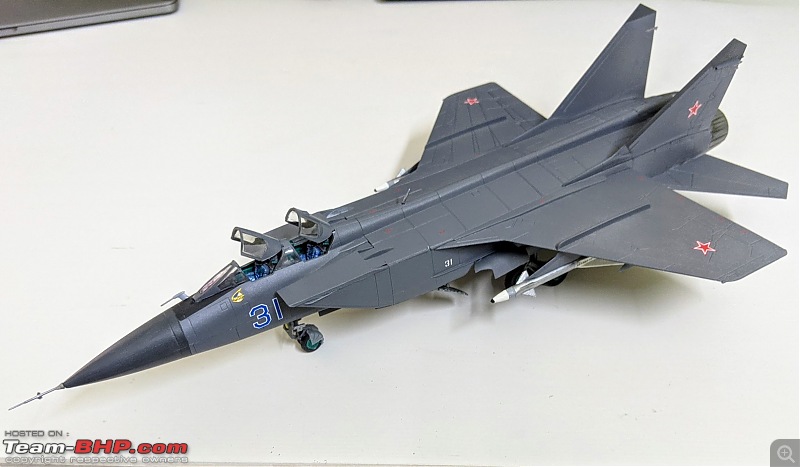
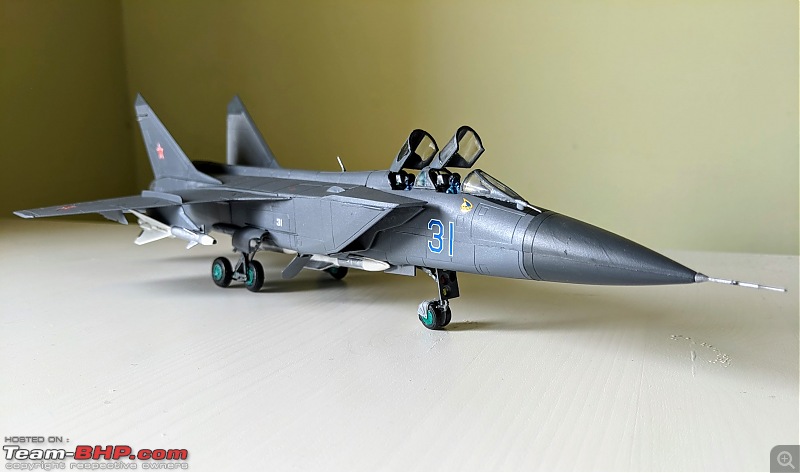
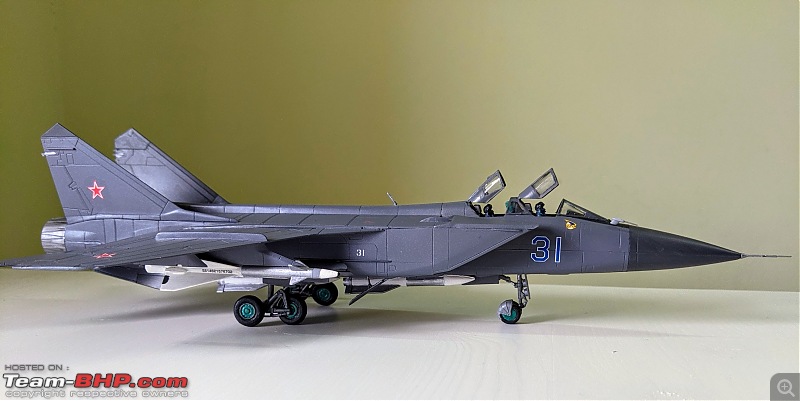
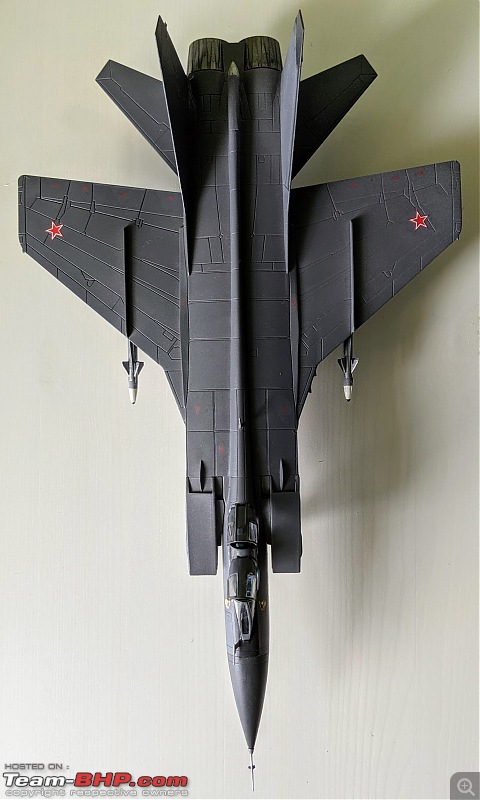
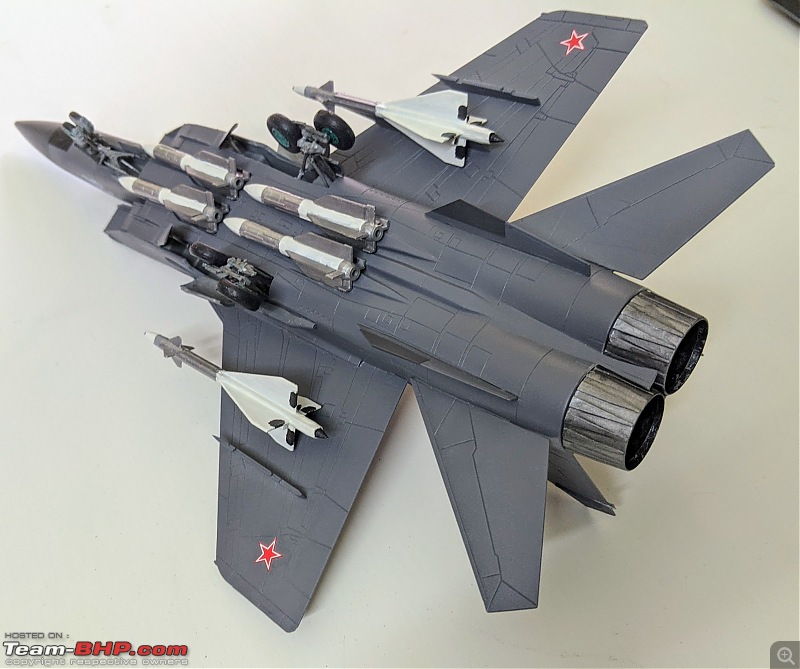
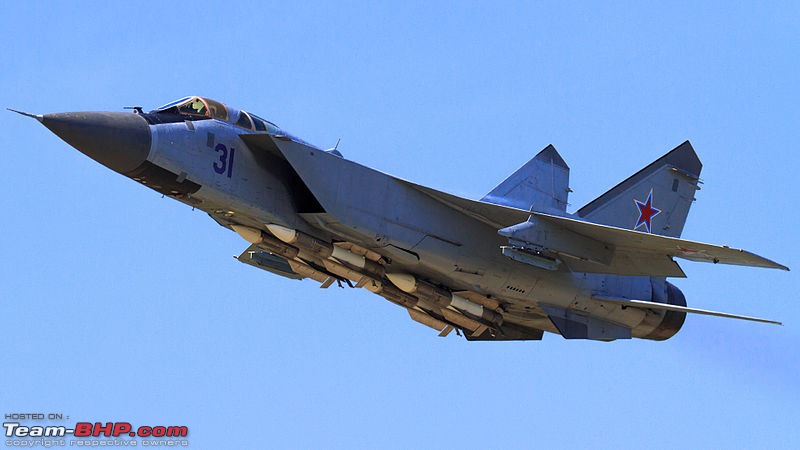

 ) 1 F-15 damaged by an R-40 but it managed to return to base (wonder how it survived 100 kgs of High explosives! )
) 1 F-15 damaged by an R-40 but it managed to return to base (wonder how it survived 100 kgs of High explosives! )